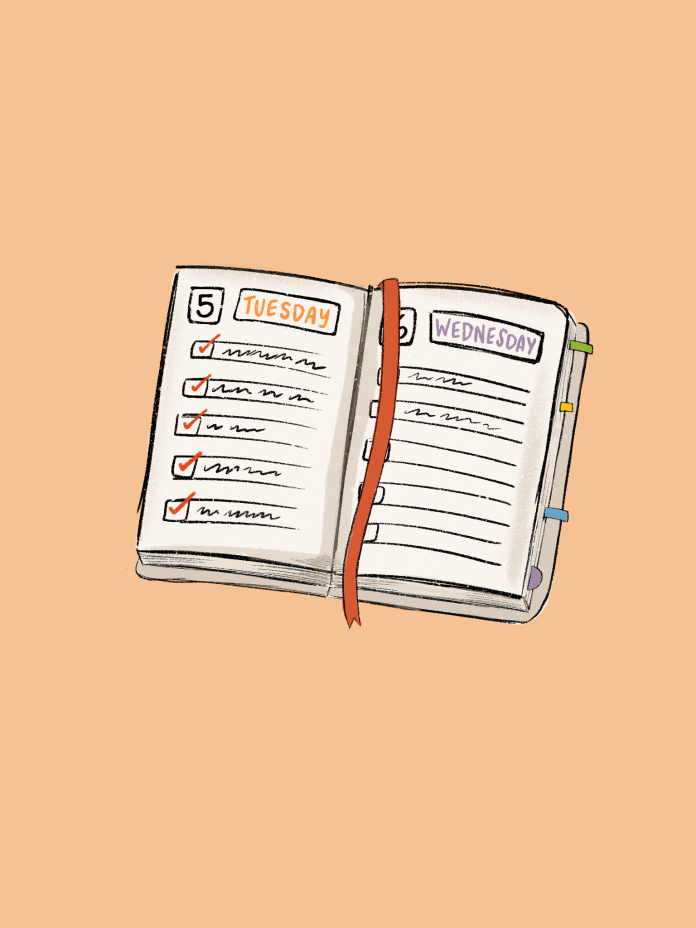Sadie Downing ‘26 is a part of Wordshop and the Board Games Club. She is also a frequent and earnest defender of many movies that people might consider to be bad. Contact Sadie at sedowning@wm.edu.
The views expressed in this article are the author’s own.
When I started preparing to come to the College of William and Mary, I was inundated with suggestions from family and friends about what was absolutely necessary for me to bring, buy or to subscribe to. To start my first semester at the College, I arrived to a much smaller dorm room than I had anticipated, absolutely filled with things I ended up never using. Because of this I stayed in an overly crowded room, boxed in and miserable.
College freshmen like me who don’t have older siblings to help their parents with narrowing down the essential packing list might not be sure exactly what they should bring. There are of course the essentials — clothing, sheets, blankets, pillows and other necessities — but there’s still plenty of other items to fill the rest of your suitcases with. Some of it, no matter how much people insist you’ll need it, ends up being useless. Take pots and pans, for instance. If you’re living in a dorm, you probably don’t need any.
However, there is one thing that does not appear on most packing lists despite being absolutely necessary to a successful college career: a planner.
Now, most college students are content to use online planners and calendars to organize their work. Some daring people might even keep track of what they have to do in their head, though I do not recommend this, as around midterm season even a person with a photographic memory would have trouble keeping track of all their assignments. Some people might argue that an online list is more convenient because it is highly portable and can be pulled up any time on your computer or your phone. But if your list of assignments is on your phone, what’s to stop you from moving past it to check Instagram or open TikTok?
Though the portability of a cellular assignment tracker can’t be denied, most of us don’t think of our phones as devices we use to keep track of our schoolwork. It’s a pocket serotonin generator, not a tool for your classes. The draw of taking a social media or gaming break is too strong for most people to ignore.
Likewise, the computer can be a distraction. Though there’s less allure with the computer — many of us use it for most of our classes anyway — it’s still got access to the internet, which allows you to look up any burning questions about the next season of “Stranger Things” instead of writing the paper that’s sitting on another tab, neglected.
Only one version of keeping track of your assignments is truly productive: the good ol’ pen-and-paper planner.
In the course of the three semesters I’ve been at the College, my planner has been the most essential product I’ve bought specifically for college. Writing my work down makes it easier for me to remember, and of course there’s the gratification that comes with drawing a thick black check mark next to a finally finished assignment. It’s like a fresh hit of dopamine each time, and crossing off one assignment often gives you the push to start the next one, so you can feel that satisfaction again.
Beyond the physical act of writing things down, a planner is essential because it helps you divide up what you’re working on. When you can see how many days you have before your assignment is due, you’re able to figure out how much work is absolutely essential each day. A planner makes the time feel more realistic and manageable, unlike a to-do list on a computer or a phone that only makes you more likely to procrastinate until the very last minute.
So, what kind of planner should you use? There’s not really a certain one I recommend above all others; a $10 planner will most likely do the job just as well as a fancy $25 one. What’s most important with buying a planner is that it’s one you’ll actually want to use. Personally, I recommend any of the planners that Barnes and Noble sells because they work well for keeping track of everything, and they look good, too.
Additionally, when purchasing a new planner, be sure to assess the amount of writing space allotted. Some people prefer a planner that’s structured more like a calendar, but I think the best type of planner has a week spread out across two pages, with an equal amount of writing space for each day. This format gives you plenty of room to write down each of your upcoming assignments and appointments. My personal planner has both a calendar and individual pages for the weeks, and it’s perfect for keeping me on track.
I suggest popping down to Barnes and Noble or Target this weekend and picking out a new one for yourself; you’ll be surprised how much it comes in handy.

